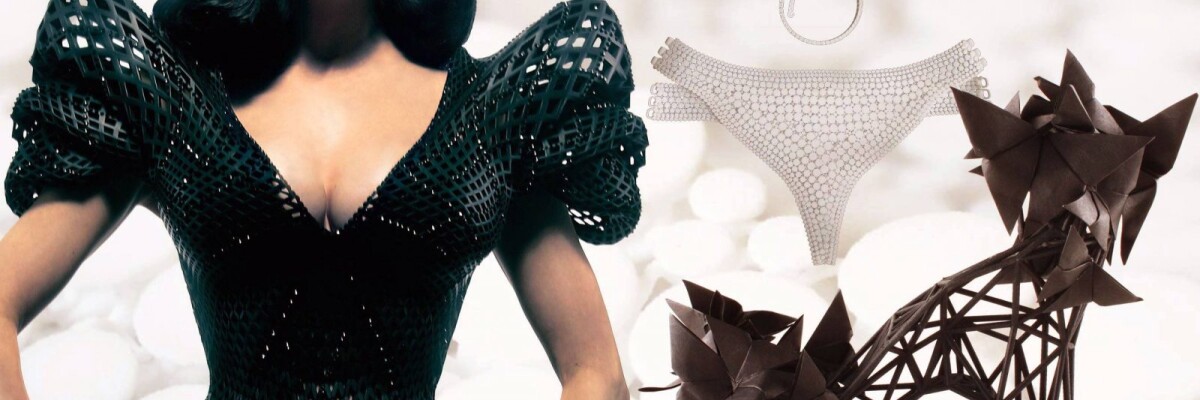We have very important news for guys who hate shopping! Men of all ages, bored in the fitting rooms, waiting for their too picky ladies. Is that picture familiar with you? Oh yes! It's unbearable. Unbearably...
We have very important news for guys who hate shopping!
Men of all ages, bored in the fitting rooms, waiting for their too picky ladies. Is that picture familiar with you? Oh yes! It's unbearable. Unbearably long and unbearably boring.
— Sweetheart, is this dress better or I’d better take the one which is a centimeter shorter? And which is better: the one with large peas or with small strawberries? Or maybe we should better buy boots instead a dress?
It will soon be over now! It will be made by technologies, quickly spreading across all areas of our life. And the fashion industry makes no exception.
Virtual changing room
Imagine: your girlfriend comes to the store for an ordinary shopping. She goes into a free cubicle with a large monitor on the wall. And within a few minutes, a smart program will select the clothes that fit exactly her by analyzing the initial data type of her figure, the color of the hair and eyes, as well as her preferences.
The first fitting is made virtually only, that means it’s quickly and occurs without unnecessary crowding. And only after the final choice is made, the selected clothes will be delivered (even automated) to the fitting room. And there is not much left: she will only need to get the phone and pay for the purchase.
It is really great, isn’t it? But that's not all. Soon we will try on the clothes virtually without leaving the apartment. And all the shopping will finally go online.
What other fantastic stories will the fashion industry give us?
ЗD-printing
More and more often we can see now models on the catwalks of the world in clothes that are partially or completely made with the help of this technology. According to experts by 2020 the 3D-printing industry will grow to $ 5.2 billion. This technology is making serious bets, and not by accident. After all, there are already many successful examples.
The Italian company ELSE Corp is one of them. It has developed two projects: ELSE.shoes and ELSE.fashion. We will try to understand the new technology with the example of footwear.
So, you come to the store. A special device scans your foot and virtually selects for you an option available in this store. Next, you "refine" the model by choosing details, color, heel height. Then the virtual version of your shoe is sent to production and printed on a 3D printer. You will only have to pick up the order from the store or arrange delivery to your home.
The company expects to attract more customers and, at the same time, reduce production costs due to new technologies. After all, you will no longer need to rent or buy storage space. And the concept of "unrealized products" simply disappears.
However, not only the Italians thought about the use of modern technology. Nike, Converse, Adidas and Reebok have been creating new models for several years using 3D printers. And Nike uses them also for production. So, the outsole for Nike Vapor Laser Talon, which weighs only 150 grams, is printed on 3D printers.
The experience of Roger Bacon Eyewear from the Netherlands is really interesting. Local engineers use 3D-printing in the production of glasses. All glasses are made according to individual parameters, obtained by means of 3D-scanning.
"The advantages of such production are obvious," the company explains. "Firstly, the glasses will not fall off, since the frame is made according to the standards of a particular customer. And secondly, each pair can become unique, because the client himself chooses the color and material of the frame."
Smart fabriques
Instead of wearing synthetics, we prefer clothes made from natural materials - wool, leather, linen, etc. There are, of course, reasons for that. But imagine that your shirt, as soon as the air temperature rises, shortens the sleeves, and you become more comfortable. Or on the contrary - suddenly it became sharply colder, and your jacket aggregates itself and begins to keep heat better. Of course, such a shirt or a jacket can not be sewn from flax or wool. But it is easy to produce it from a smart fabric!
Smart fabrics are divided into:
- active (they react to changes in the environment);
- passive (they understand that the environment was changed);
- very smart (they detect what was changed and change their properties).
Optical fibers, metals, conductive polymers - these are materials from which smart fabrics are made. Nanostructures are often used for clothes production. They impart different properties to the materials: hydrophobic, antibacterial, sunscreen and others.
So, the developers from the German company called Zimmermann could weave into the material very thin wires that are able to heat clothes to the required temperature. However, an accumulator is required for that. It weighs 200 grams only, so it will not make clothes too heavy, but it will solve a number of problems in cold weather.
Lauren Bowker, the designer from London, develops a sensory fabric that can determine your mood. For example, I met my ex-wife and immediately found myself dressed in black: they say, mysterious and impregnable, and all the past should remain in the past.
There was an occasion for joy, the salary was raised, and then clothes get painted in bright green color. Let everyone know that you are doing well! In the future, suggests Bowker, this tissue can be used to treat depression and other emotional disorders.
BigData
We are being watched. But this is not news. Every step in a virtual or physical reality is a fact already recorded by someone and somewhere. And why not to analyze it and not to make it beneficial for the fashion industry?
By the way, quite a lot of startups are engaged in this - the analysis of consumer preferences. And they build business chains and based on this data.
For example, you can get a clearer definition of the target audience. If the designer knows exactly who will wear clothes, it is easier for him to work on a new collection, and then sell it on the market.
A large database of information can help the consumer. Let's say that in a couple of days an important event will be held, which I was asked to moderate. If you consider that this kind of events happen very rarely or even for the first time, you can guess that there is not clothing in my closet fitting to the occasion. A certain service uses my goals and preferences, as well as age and other parameters, offers me a look “on a turn-key basis". That means, I will be delivered clothes either to the venue of the event, or home. And immediately after the event it will be taken away.
There is a second option. I take pictures of my clothes and upload images and data to the application. The program analyzes and compares all the necessary information and shows the options and suggests places where it can be ordered. There is no secret that even with a lot of clothes, we are not always able to find the right solution.
Another important point that will make BigData simple, is the problem of choice. After all, if you’re doing shopping, you do not know what to stop at, because the retailers offer hundreds of models. How to choose if you want everything at once and you don’t have money for it all? How to make sure that items bought on sales won’t spend the rest of the time in the closet with labels still on them.
Big data are called big because they can accurately determine what specifically you need to buy, in which store and even on what shelf. You will need to choose not from hundreds, but from three to five options. Let’s agree, this is much easier and faster.
So, what do we get as a result of all these innovations?
- It will be possible to try on clothes at home at the desktop or even anywhere else - with your smartphone.
- You won’t need to look for desired things, you will only need to enter the data and print it out.
- Clothing will be all-season, so it will not be necessary to buy something new with the change of weather.
- Finally, you can not stress at all about what clothes you generally need - BigData will tell you.
So instead of going out for shopping, stay at home with popcorn and movie, because there will be no need to go out anymore. Remember where we started? The guys bored near the fitting rooms - freedom is not far off, the IT revolution will free us!
Share this with your friends!






Be the first to comment
Please log in to comment